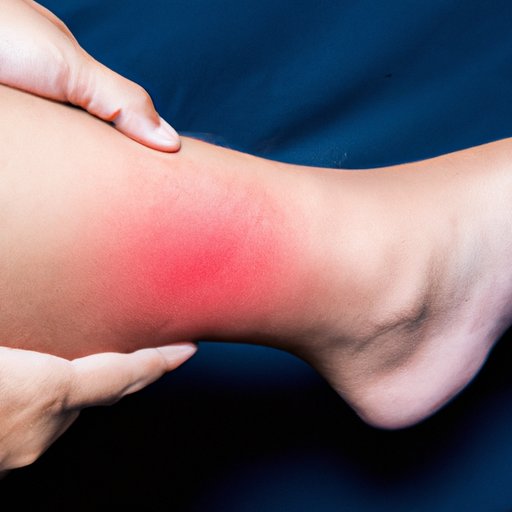
Introduction
A bone bruise is a traumatic injury affecting the bone’s inner layer. It can be caused by a fall, car accident, or any other incident that results in direct force or pressure on the bones. Bone bruises can cause pain and limit mobility, making it more challenging for individuals to exercise. Understanding bone bruise symptoms and their causes is necessary to decide on the type of exercise that is safe to perform during the recovery process.
The Do’s and Don’ts of Exercising with a Bone Bruise
Exercising with a bone bruise requires careful consideration. Avoiding certain activities can relieve swelling and discomfort during the healing process. Below are the do’s and don’ts of exercising with a bone bruise:
- Avoid high-impact exercises, such as running and jumping
- Avoid exercises that put weight on the affected area, such as lunges and squats
- Avoid activities that pose a high risk of falls, such as skiing and horseback riding
- Perform exercises that build strength without putting stress on the affected area, such as swimming and cycling
- Perform low-impact exercises to reduce pain, such as yoga and pilates
It is essential to avoid exercises that cause pain and limit mobility during the healing process. Rest is also crucial to aid in the bone bruise’s recovery.
Bone Bruises and Exercise: What You Need to Know
Exercising with a bone bruise can have both positive and negative effects on the recovery process, depending on the chosen activity. Knowing how exercising affects the affected region can help individuals choose the appropriate exercise.
Dealing with a bone bruise might differ between people since the location and severity of the bruise can vary. The bruised region may still cause some pain, which might limit mobility and, therefore, the type of exercise you can perform.
Can You Work Out with a Bone Bruise? The Answer May Surprise You
Studies show that light-to-moderate exercise can benefit individuals with a bone bruise. Inactivity can lead to muscle wasting, which can exacerbate the injury. Physical activity can strengthen muscles, tendons, and bones, which can promote healing in the affected area.
However, overdoing it can worsen the condition; therefore, it is critical to start slow and gradually increase the intensity and duration of the exercise. Strenuous exercises should be done under supervision and with guidance from healthcare professionals.
Injury-Proof Your Workouts: Tips for Exercising with a Bone Bruise
Bone bruises can cause soreness and discomfort. Exercising with a bone bruise requires some modification to ensure safety and prevent further damage.
- Focus on proper form and technique, especially when doing resistance training or weightlifting exercises
- Reduce the intensity of the workout and avoid prolonged exercises
- Take breaks between exercises to give time for the affected area to rest
- Avoid twisting and fast movements that can stress the bruised area, leading to further injury
- Use protective gear and supportive braces to reduce the risk of further injury
While limiting physical activity during the healing process is recommended, it is essential to exercise to prevent degeneration of the surrounding tissues of the affected area. Modifying your exercises to suit your situation can help you maintain fitness and avoid setbacks in the healing process.
How to Modify Your Exercise Routine When Dealing with a Bone Bruise
Some exercises can be modified to fit the limitations caused by bone bruises. While doing so, it is essential to listen to your body and avoid exercises that cause pain or discomfort. Consulting with healthcare professionals is also advised before attempting to modify your exercise routine. Below are some modifications to consider:
- Running: Avoid running on hard surfaces and reduce the intensity and duration of the run
- Weightlifting: Reduce the weight lifted and try alternative exercises such as bodyweight exercises
- Yoga: Modify poses that require pressure to the affected region, such as poses that require kneeling or standing on one leg
Modifying your exercise routine can help you stay active and aid in the healing process while avoiding adding additional stress to the affected area.
Conclusion
Healing from a bone bruise requires patience, rest, and gradual progress in physical activity. Listening to your body and modifying activities that cause pain or discomfort is crucial during the healing process. Incorporating low-impact exercises can aid in the recovery of the affected area and prevent further injury.
Exercising with a bone bruise is possible, and with care, it can even speed up the healing process. Always remember to consult with healthcare professionals before attempting to modify your exercise routine, and avoid pushing your body beyond its limits.




